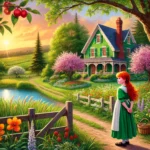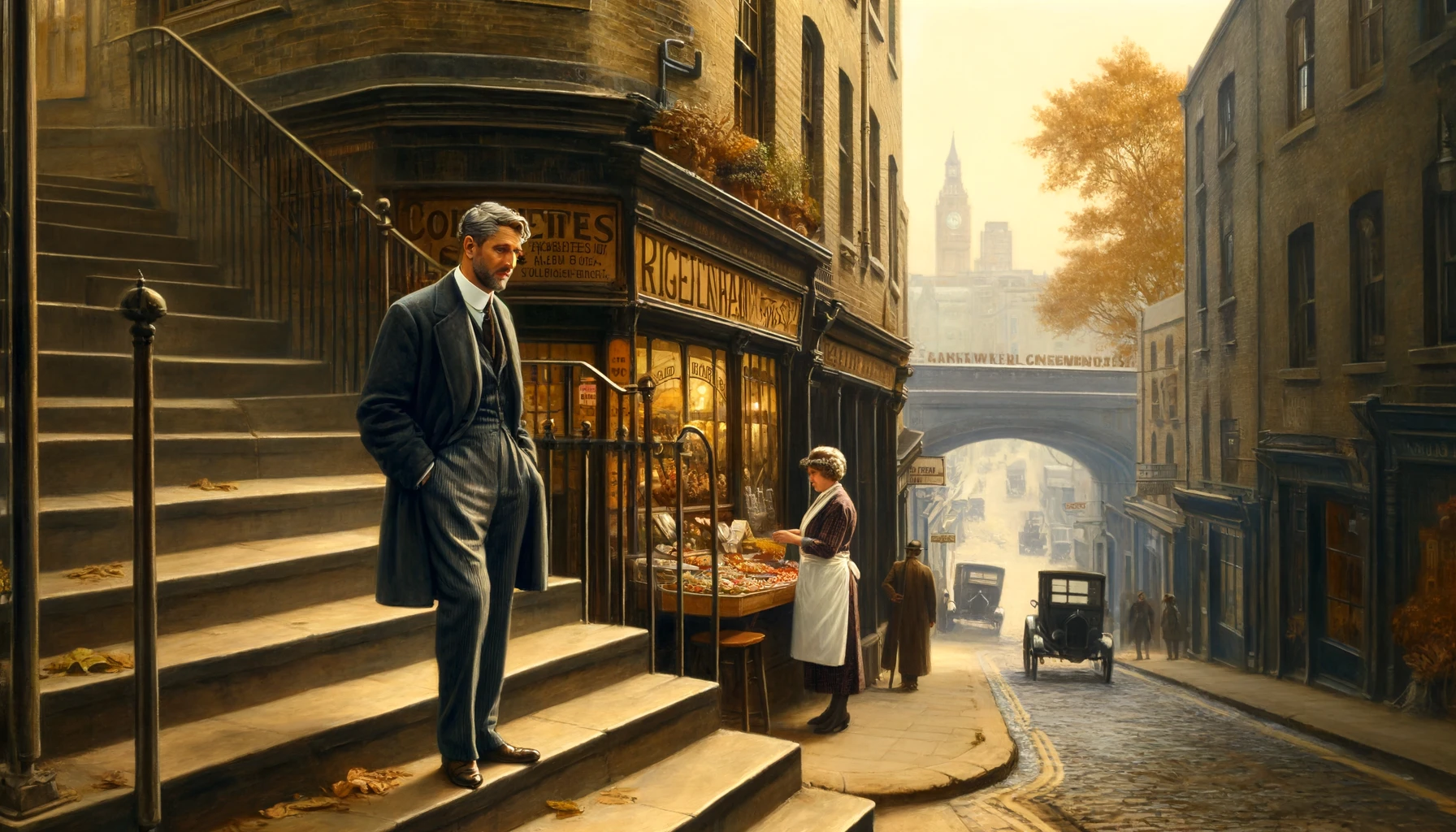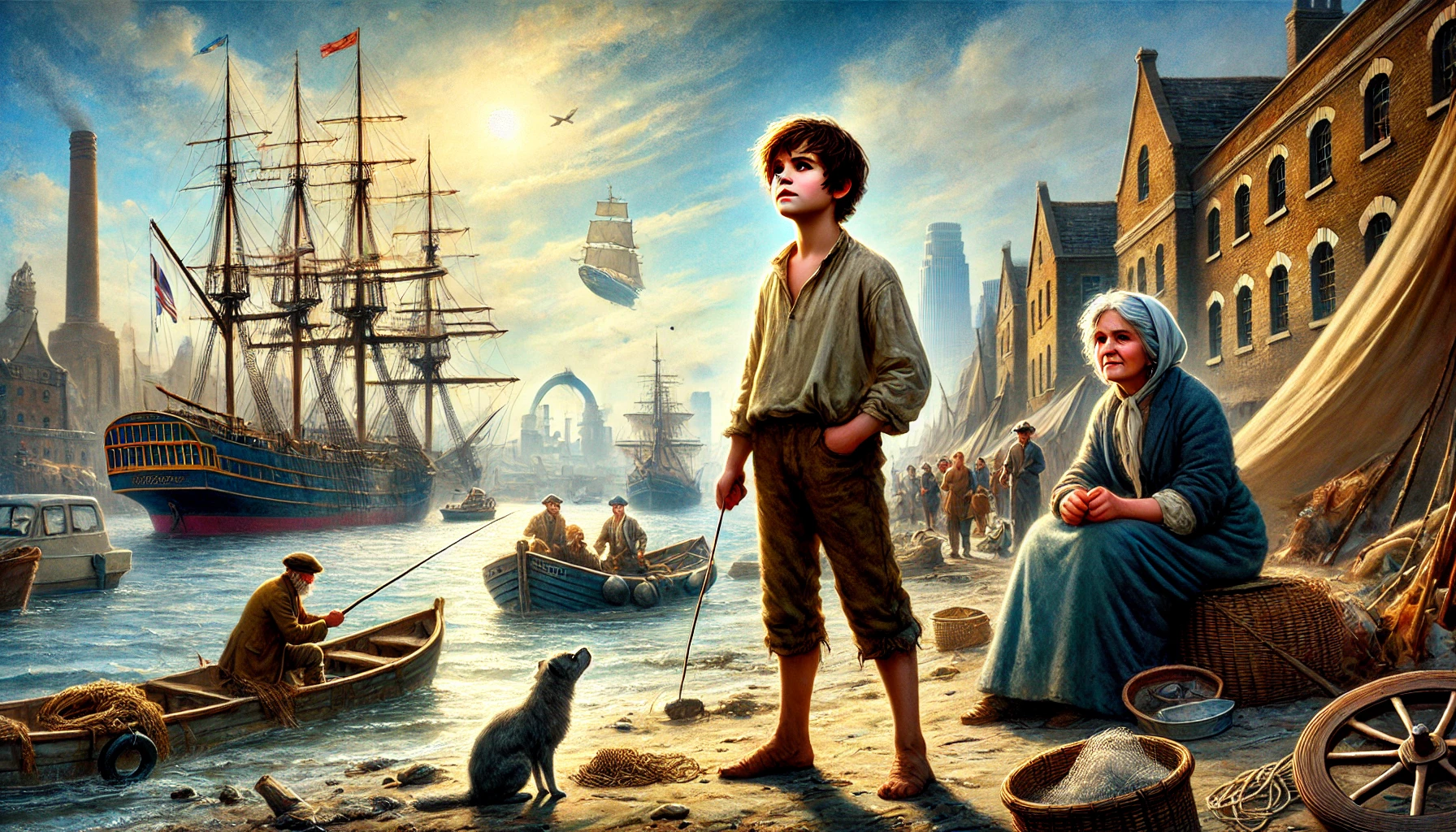Anna Karenina is a masterpiece by Russian author Leo Tolstoy, first published in 1877. It is considered one of the greatest novels of all time, delving deeply into human emotions, societal pressures, and personal choices. The novel is set against the backdrop of 19th-century Russian aristocracy and intricately examines the lives of its characters, revolving around themes of love, infidelity, family, and morality. At its center is the tragic love affair between Anna Karenina, a beautiful and emotionally complex woman, and Count Alexei Vronsky, a handsome officer, which unfolds with devastating consequences.
Plot Summary
The Oblonsky household is in chaos. Stepan Arkadyevitch, or Stiva, has been unfaithful to his wife, Darya Alexandrovna, known as Dolly. She discovers his affair with their children’s governess and refuses to speak to him. Stiva is repentant, but more so because his comfortable life is disrupted. He seeks solace in his sister Anna Karenina’s impending visit, hoping she might mediate a reconciliation.
Anna arrives in Moscow from St. Petersburg, leaving behind her cold and indifferent husband, Alexei Karenin, and their son. She radiates beauty and charm, captivating everyone, including Count Alexei Vronsky, a handsome young officer. He has been courting Kitty Shcherbatskaya, Dolly’s younger sister, but upon seeing Anna at a ball, Vronsky becomes infatuated. Kitty, who had been on the verge of accepting a marriage proposal from Konstantin Levin, a socially awkward yet sincere landowner, is heartbroken when Vronsky abandons her. Levin, crushed by Kitty’s rejection, retreats to his country estate, searching for meaning in the simplicity of rural life.
Vronsky pursues Anna relentlessly. Despite her initial resistance, Anna eventually succumbs to his advances. Their affair becomes the center of Anna’s life, pulling her away from her husband, her child, and society. Meanwhile, Levin immerses himself in agricultural work, seeking solace in the rhythms of nature and the toil of the land. He struggles with existential questions, grappling with his place in the world, his relationship with faith, and his yearning for love.
Anna’s husband, Karenin, is a stiff, emotionless bureaucrat who cares deeply for his public image. He initially ignores the rumors of Anna’s infidelity, but when it becomes undeniable, he confronts her. After Vronsky’s dramatic fall during a steeplechase, which leaves Anna visibly shaken, she confesses to Karenin that she is pregnant with Vronsky’s child. Anna, trapped between her passion for Vronsky and her duty as a mother, begs Karenin for a divorce. Karenin refuses, concerned about the scandal it would cause. Vronsky, sensing the strain, encourages Anna to run away with him, but she hesitates, torn between her love for Vronsky and her guilt over abandoning her son.
As the months pass, Anna becomes increasingly isolated. Her love for Vronsky turns from passionate devotion to suffocating dependence. She grows paranoid and jealous, fearing that he will tire of her and return to society without her. Vronsky, though still in love with Anna, begins to feel the weight of their relationship, which has cut him off from his former life and ambitions. The once-intoxicating romance begins to sour under the pressures of social exile.
Levin, in contrast, finds a different path to fulfillment. He remains troubled by his inability to connect with others in the way he desires. Yet, his love for Kitty, which he believes to be unrequited, never fades. After a long period of soul-searching, Levin returns to Moscow, where he unexpectedly encounters Kitty again. This time, Kitty, having recovered from her disillusionment with Vronsky, accepts Levin’s proposal. Their marriage is not without its challenges, but it is rooted in mutual respect and genuine affection, qualities that contrast sharply with the tumultuous relationship between Anna and Vronsky.
Anna’s descent into despair continues. Her relationship with Vronsky deteriorates as she becomes consumed by jealousy and paranoia, convinced that he no longer loves her. She turns to morphine to dull her emotional pain, sinking further into depression. Karenin, in a surprising turn of events, offers Anna forgiveness and refuses to divorce her, hoping she will return to their son and their life together. But Anna is too far gone, unable to see any way out of her misery.
In the midst of Anna’s turmoil, Levin and Kitty’s life progresses in a peaceful, if sometimes imperfect, rhythm. Kitty becomes pregnant, and the couple begins to experience the joys and challenges of parenthood. Levin continues to wrestle with philosophical questions, particularly his faith, but he finds a sense of purpose in his role as a husband and father. His connection to the land and his family provide him with a grounding that he had long sought.
For Anna, however, there is no such solace. Consumed by her emotional isolation and convinced that Vronsky no longer loves her, she sees only one escape. In a moment of utter despair, Anna throws herself in front of a passing train, ending her life in a tragic and violent act. Her death is a catastrophic culmination of the inner torment that had plagued her throughout her relationship with Vronsky.
Vronsky, devastated by Anna’s death, tries to find meaning in his life but fails. He enlists in a military campaign, seeking escape in danger and war, but nothing can alleviate his grief or sense of guilt. His once-carefree life, filled with ambition and social pleasures, is irrevocably shattered.
In the aftermath of Anna’s death, Levin continues his journey toward understanding. After his son’s birth, he undergoes a spiritual awakening, finding peace in the realization that the meaning of life lies not in intellectual pursuits or societal approval, but in love, family, and faith. Levin’s quiet triumph offers a stark contrast to the chaos and despair of Anna’s story. Where Anna’s passion led to destruction, Levin’s steady devotion to Kitty and his family brings him a deeper, more enduring happiness.
Thus, as life continues for those left behind, the world moves forward—shaped by love, duty, and the eternal search for meaning. The tragedy of Anna Karenina’s fall stands as a powerful reminder of the consequences of pursuing passion without boundaries, while Levin’s journey toward inner peace affirms the value of faith, humility, and familial bonds.
Main Characters
Anna Karenina: A striking, passionate, and intelligent woman trapped in a loveless marriage. Her emotional turmoil leads her into a love affair with Count Vronsky, which becomes her ultimate downfall. Throughout the novel, she struggles with societal expectations, personal desires, and the consequences of her actions.
Count Alexei Vronsky: A dashing and wealthy officer who falls in love with Anna Karenina. Though his love for her is genuine, he lacks the depth to fully comprehend the emotional weight of their affair. His actions drive much of the conflict in Anna’s life.
Alexei Alexandrovich Karenin: Anna’s husband, a high-ranking government official who values his career and social status above all else. Emotionally cold, Karenin struggles with his wife’s infidelity but clings to his conservative values and the appearance of propriety.
Konstantin Dmitrievich Levin: A landowner and intellectual who is searching for meaning in life, love, and his place in society. Levin represents Tolstoy’s own philosophical views, and his story is a parallel to Anna’s, exploring love and happiness in a more spiritual and domestic sense.
Kitty Shcherbatskaya: A young, innocent woman who initially falls in love with Vronsky but is rejected by him. Her eventual marriage to Levin forms a significant subplot in the novel, depicting a more stable and fulfilling kind of love compared to the tragic affair between Anna and Vronsky.
Stepan Arkadyevitch Oblonsky (Stiva): Anna’s brother, a charming but morally lax man who frequently cheats on his wife, Dolly. His infidelity and carefree attitude toward marriage serve as a contrast to Anna’s more profound moral and emotional struggles.
Darya Alexandrovna (Dolly): Stiva’s long-suffering wife and the moral conscience of the story. She endures her husband’s infidelities with strength and devotion, representing the ideal of traditional family values.
Theme
Love and Infidelity: At its core, Anna Karenina explores different kinds of love—romantic, familial, and spiritual. Anna’s affair with Vronsky is passionate but destructive, while Levin and Kitty’s marriage offers a redemptive, more balanced depiction of love. Infidelity plays a crucial role, as it leads to Anna’s social ostracism and eventual downfall.
Society and Judgment: Tolstoy vividly portrays the rigid social structure of Russian aristocracy, where reputation and societal expectations dictate personal happiness. Anna’s transgression leads to severe judgment and isolation, demonstrating the harsh consequences of defying societal norms, particularly for women.
Search for Meaning: Levin’s existential journey reflects Tolstoy’s own philosophical inquiries into life, faith, and happiness. His struggle to find meaning in work, family, and religion contrasts with the self-destructive choices of other characters, like Anna and Vronsky.
Gender and Power: The novel explores the double standards in how men and women are treated when it comes to love and morality. Anna is harshly judged for her affair, while her brother Stiva and Vronsky face few lasting consequences. This disparity highlights the limited power and autonomy afforded to women in Russian society.
Writing Style and Tone
Tolstoy’s writing in Anna Karenina is rich with realism, focusing on the psychological depth of his characters and the complexity of their emotions. He uses a third-person omniscient narrative, allowing the reader to explore the inner thoughts and motivations of each character. This technique enhances the moral dilemmas faced by Anna, Levin, and others, presenting their struggles in a deeply empathetic and often tragic light. Tolstoy’s ability to capture the intricacies of human behavior and relationships is one of the novel’s greatest strengths.
The tone of the novel fluctuates between the romantic and the tragic. It begins with a light-hearted portrayal of domestic and societal life but gradually shifts to a more somber and contemplative mood as Anna’s personal crises escalate. The contrast between the vitality of Levin and Kitty’s pastoral life and the decay of Anna and Vronsky’s urban, passion-driven affair serves to highlight the central tension between love, duty, and personal fulfillment. Tolstoy’s moral seriousness pervades the narrative, inviting readers to reflect on their own values and societal pressures.
We hope this summary has sparked your interest and would appreciate you following Celsius 233 on social media:
There’s a treasure trove of other fascinating book summaries waiting for you. Check out our collection of stories that inspire, thrill, and provoke thought, just like this one by checking out the Book Shelf or the Library
Remember, while our summaries capture the essence, they can never replace the full experience of reading the book. If this summary intrigued you, consider diving into the complete story – buy the book and immerse yourself in the author’s original work.
If you want to request a book summary, click here.
When Saurabh is not working/watching football/reading books/traveling, you can reach him via Twitter/X, LinkedIn, or Threads
Restart reading!








